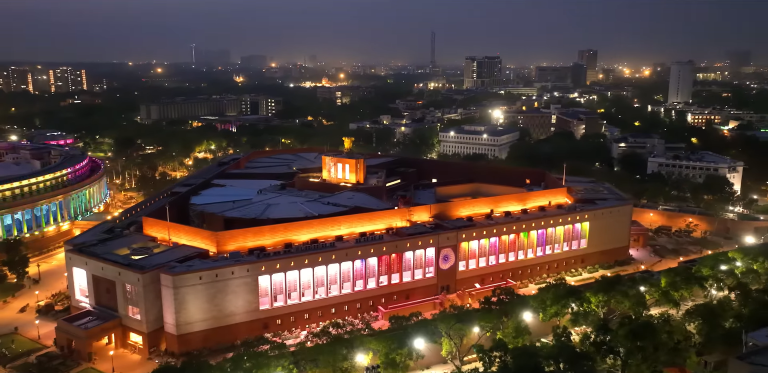88.11% of wells in Gujarat show rise in groundwater levels: Centre in Lok Sabha
March 11, 2025
New Delhi: A long-term analysis of groundwater level fluctuations in Gujarat reveals that 88.11% of wells in the state have shown a rise in water levels, the Union government stated in Lok Sabha.
During the ongoing Budget Session of Parliament, Minister of State for Jal Shakti, Raj Bhushan Chaudhary, stated:
Central Ground Water Board (CGWB) monitors groundwater levels throughout the country on a regional scale including Gujarat, four times in every year through its network of monitoring wells.
In order to assess the long term fluctuation in ground water levels, the water level data collected by CGWB during November 2024 has been compared with the decadal mean water levels of November (2014-2023) for the state of Gujarat including the District of Banaskantha as detailed in Annexure. Perusal of such long term data on fluctuation of ground water levels in respect of Gujarat indicates that 88.11% of wells have registered rise in ground water levels in the state of Gujarat and in Banaskantha, 93.3% wells have registered rise.
Water being a state subject and the responsibility of ground water management, including taking initiatives for improvement of ground water resources, lies primarily with the state governments. The Central Government complements the efforts of the States by providing technical support and financial assistance through its various schemes and projects. However, the Central Government has taken several steps in the direction of sustainable management of ground water resources of the country, including in Banaskantha and Gujarat, and some of the important ones are mentioned below:
i. The Government is implementing Jal Shakti Abhiyan (JSA) in the country since 2019 which is a mission mode and time bound programme for harvesting the rainfall and taking up water conservation activities. Currently, JSA 2024 is underway in the country with a special focus on 151 priority districts, out of which 6 are in Gujarat, including Banaskantha. JSA is an umbrella campaign under which various ground water recharge and conservation related works are being taken up in convergence with various central and state schemes. In the past 4 years construction of more than 2 lakh water conservation structures has been completed/ongoing under JSA in Gujarat.
ii. National Aquifer Mapping Studies have been carried out for the entire mappable area of the country including Gujarat. The total mappable area of Gujarat including Banaskantha has been covered under National Aquifer Mapping and Management Programme (NAQUIM). The District-wise groundwater management plans, containing recommendations for both demand and supply side interventions have been prepared and shared with State and District Authorities for implementation.
iii.MoJS is implementing Atal Bhujal Yojana, which is a community led scheme for participatory ground water management focusing on demand side management of ground water in 80 water stressed districts in 7 States. Construction of various rain water harvesting and recharge structures like check dams, ponds, shafts etc. are incentivized under the scheme. Parts of Gujarat state including those of Banaskantha district are covered under the Scheme.
iv.Master Plan for Artificial Recharge to Groundwater- 2020 has been prepared by the CGWB in co- ordination with States/UTs, providing a broad outline of the project and expected investments. The Master Plan envisages construction of about 1.42 crore Rain water harvesting and artificial recharge structures in the Country to harness 185 Billion Cubic Metre (BCM) of water. The Master plan has been shared with States/UTs for suitable interventions.A total of 13.36 lakh Rain water harvesting and Artificial recharge structures have been recommended for Gujarat, with around 21,000 for Banaskantha.
v.Department of Agriculture & Farmers’ Welfare (DA & FW), GoI, is implementing Per Drop More Crop (PDMC) Scheme in the country, including Gujarat, since 2015-16, which focuses on enhancing water use efficiency at farm level through Micro Irrigation and better on-farm water management practices to optimize the use of available water resources.
vi.Mission Amrit Sarovar was launched by the Government of India which aimed at developing and rejuvenating at least 75 water bodies in each district of the country, including Gujarat. As an outcome nearly 69,000 Amrit Sarovars have been constructed/rejuvenated in the country with 2,650 in Gujarat and 99 in Banaskantha.
vii.A total of 3,078 nos. Digital Water Level Recorders have been installed in Gujarat under various central schemes like Atal Bhujal Yojana and National Hydrology Project (NHP) to monitor the ground water level fluctuation on real time basis.
Recent Stories
- IMD issues heat wave alert for Ahmedabad city till May 3rd
- ₹61 crore MGNREGA scam unearthed in 3 villages of Dahod
- Maximum temperature nears 44°C in Gujarat
- Azerbaijan Airlines to launch Ahmedabad–Baku direct flight service from July
- Amul launches "world’s highest protein Kulfi"
- GMRC timetable for Ahmedabad - Gandhinagar Sachivalaya Metro route
- 28 kg of stale food destroyed during inspection at 3 food outlets in Rajkot

